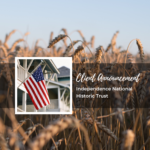Not long ago, I had the chance to lead a series of training sessions for a nonprofit board that happened to be composed mainly of attorneys. These were high-powered legal achievers, used to facing down tough opponents in open court or across a negotiating table. Yet when invited to help their organization with fundraising, they suddenly showed a decidedly shy side.
I find this a striking example of a phenomenon that is actually very common. Nonprofits rely on their boards to play a critical role in fundraising success, yet often provide board members with little more introduction than an orientation binder with bylaws, policies, and budgets. They expect these volunteer leaders to then be naturally at ease as connectors and fundraisers, a role most of them find entirely unnatural.
The good news is that there is a solution: approaches to board training that require a relatively modest investment of time and yield consistently—sometimes dramatically—positive results.
The Missing Link
It is surprising that board trainings, though more and more common, are still not entirely routine, both as part of onboarding new members and ongoing education. Organizations contemplating campaigns take it for granted they will need a planning study, a plan, and a campaign director. Those engaged in ongoing major gifts fundraising invest in everything from prospect research and data analytics to consulting on moves management. Yet an intentional focus on preparing board or development committee members remains relatively rare. This is despite the knowledge that board members will either be making key asks or making key connections—and that your success will depend on theirs.
The good news is that a single well-planned afternoon during a board retreat can go a long way to remedying this situation, and a short series of sessions over the span of a few months, perhaps with a yearly tune-up, can be transformational. At Schultz & Williams, when we plan and lead board training sessions, we treat them essentially as a short introduction to best practices in major gifts fundraising. This means combining some clear, pointed instruction on basic principles with lots of practice.
We lay out the concrete steps of prospect identification, cultivation, and solicitation. We talk about keys to success at each stage. And we provide the actual words board members should use in conversation, then try them out through small-group role playing. In some ways, the dynamic is like that in any college class you would take. The material feels daunting at first, but then becomes steadily approachable. Some class members get the hang of things right away, a few need extra help.
The aim of this approach is to provide your volunteer fundraisers with a kit of tools they can rely on and put to work. We find, however, that as we focus on the tools, we accomplish something even more important: building confidence and easing trepidation. As participants get comfortable with the how-to of fundraising, they experience a shift in mindset as well and begin to see themselves in a new role.
Of course, we help nurture their confidence by drumming home some fundamental and assuring truths, more than familiar to fundraising pros. First, the gift solicitation is not a one-shot, all-or-nothing encounter; it’s the final, almost inevitable exchange in an extended conversation. Second, you are not forcing anyone to make a gift. People give because they want to—and because they are asked.
Real Results
Our team at Schultz & Williams works with nonprofits of every size and at every stage in their organizational evolution. That means we encounter boards of many kinds. Some are packed with philanthropic insiders. Over the years, they’ve asked for many gifts and been asked for many gifts too. They know the ropes and their role.
Many more nonprofits, though, are not at this stage. A majority of their board members are to some degree uncomfortable with fundraising, and the results are predictable. They drag their feet on making contacts and making asks, and urging them forward becomes a time-consuming preoccupation for staff. These are the boards that can benefit in major ways from the experience of training.
Once they have taken part, we find overwhelmingly that they appreciate the opportunity. They have joined a board in order to advocate for a cause they believe in, and now they feel equipped to advocate in an important new way.
As an added benefit, participants also finish training with a fresh respect of the art and science of fundraising—and for the professionals on staff who put those practices to work day in and day out.





